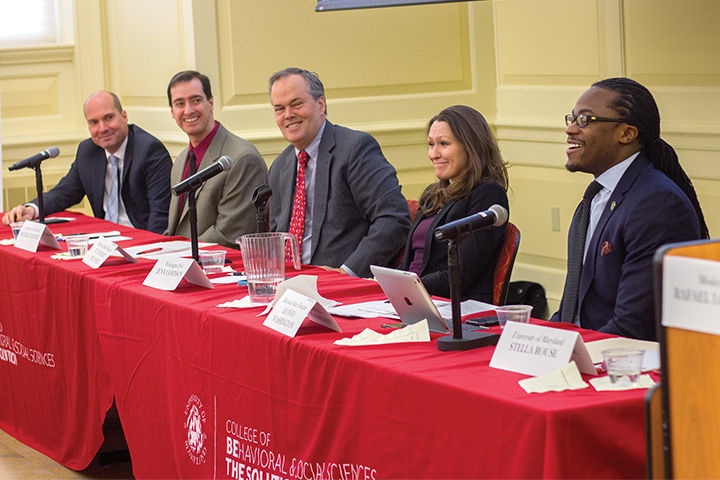
Opposition to Education Cuts
Sixty-nine percent of state residents oppose Hogan’s proposal to slow education spending increases, according to the poll.
A majority of state residents are confident Gov. Larry Hogan is taking the state in the right direction, but a larger majority oppose his plans for education funding, according to a recent poll.
A poll by The Washington Post and this university released Feb. 10 was the topic of discussion Monday at a panel in McKeldin Library, where two state delegates from opposite parties debated Hogan’s plans, while Post reporters and university professors helped give context to the numbers.
When Hogan released his budget last month, he touted a $45 million increase in K-12 public education spending. But this figure was $144 million less than what educators expected and planned for, prompting an outcry among some educators.
According to the poll, 69 percent of state residents oppose Hogan’s proposal to slow down education spending increases, while 27 percent support it. Still, 58 percent of those polled said they are confident Hogan will take the state in the right direction.
Del. Alonzo Washington (D-Prince George’s) said the slowdown in spending would force Prince George’s County schools to cut 600 teaching jobs.
“How are we going to improve? How are we going to attract more families to our country?” Washington said at the forum. “We won’t be able to stabilize our education system without the money that was slated due to the education formulas put in place over 10 years ago.”
Del. Tony McConkey (R-Anne Arundel) argued that Hogan is spending as much as possible on education given the state’s fiscal woes.
“Annapolis for the last 10 years has spent more than what it has taken in and that’s why we’re in so much difficulty now, we’ve maxed out our credit cards,” McConkey said. “What Gov. Hogan is saying is simply ‘Let’s spend within our means.’ If we get X amount of dollars, let’s not spend more than X amount of dollars. Still, with that limitation, he has found an extra $45 million for education.”
After Rafael Lorente, the event moderator and the journalism school associate dean, opened the floor for questions, the discussion shifted to higher education funding, with some students expressing concerns about tuition increases.
Washington said Hogan’s budget could lead to a 20 percent tuition increase over the next four years, with a 5 percent hike for the upcoming school year.
“I was a first-generation college student,” said Washington, who graduated from this university in 2007. “I understand the importance of college education and ensuring that college stays affordable.”
After the forum, Washington said that the legislature can only move funds around, not increase total spending in the budget, so he would like to find other places to make cuts and transfer that money to education.
Alexander Sorto, a sophomore criminology and criminal justice major, said he is nervous regarding what budget cuts will do to young people trying to pay for college.
“It will definitely affect a lot of people because not everybody has the resources to pay for higher education,” Sorto said. “UMD is a flagship school and it is definitely going to be difficult for us.”
Government and politics professor Michael Hanmer, one of the poll’s creators, said respondents wanted the governor and state legislature to prioritize public education.
“The General Assembly and governor have to figure out ways to make sure that our education system gets stronger,” Hanmer said. “And we have to do more with less.”
Source: The Diamondback
Author: Jon Banister
Date: February 24, 2015
